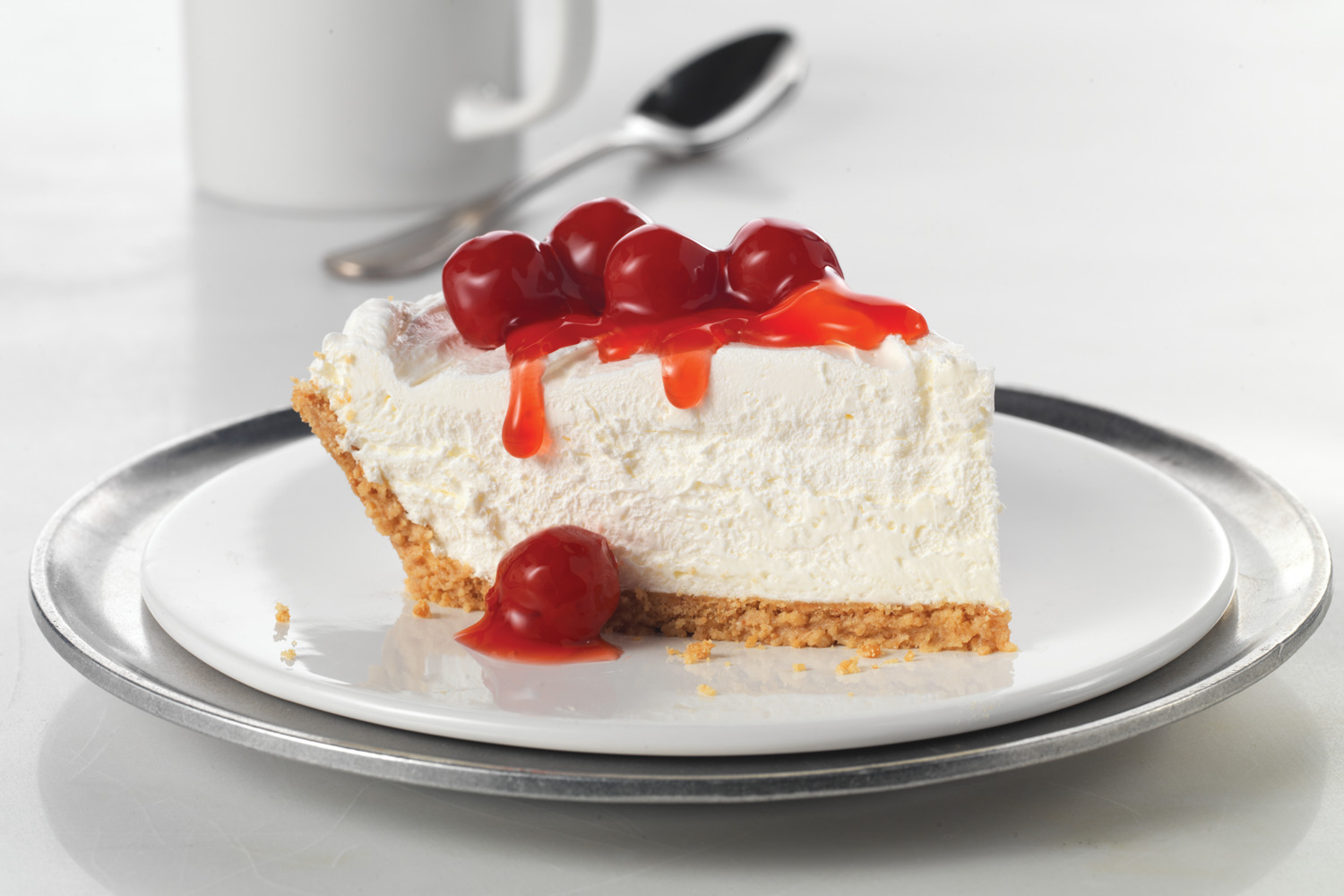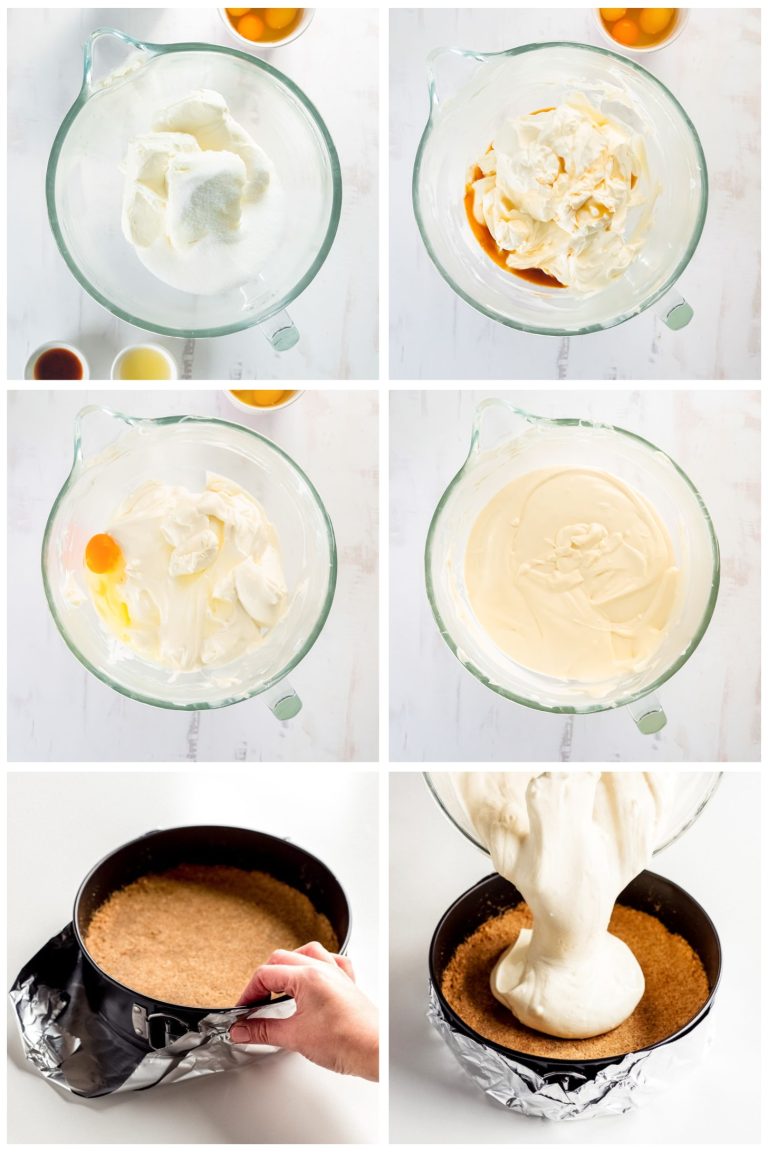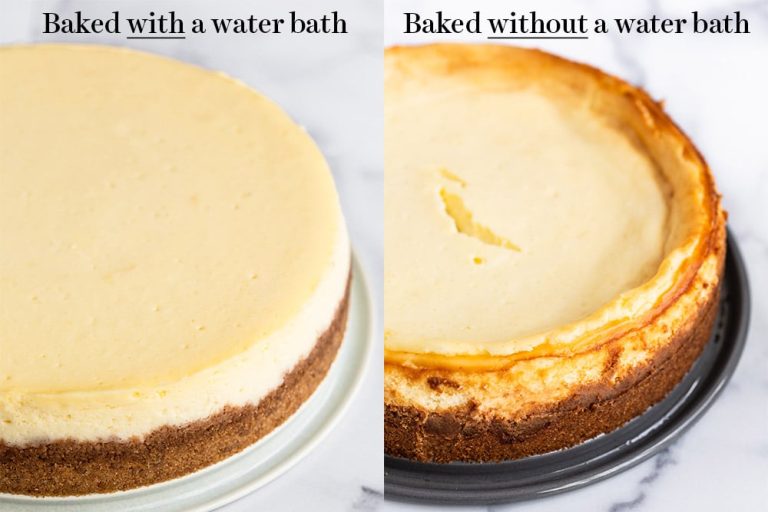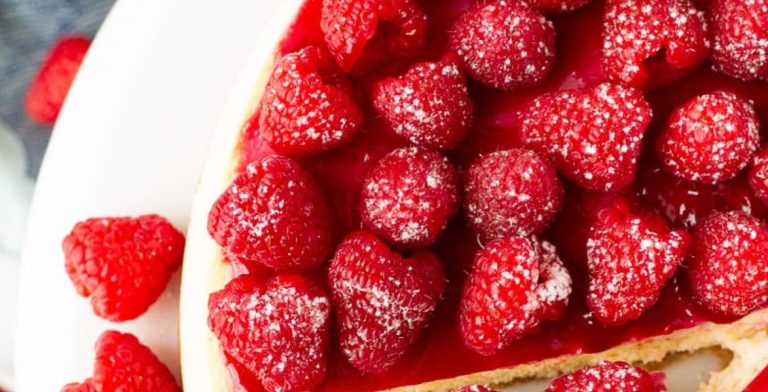How to Cool a Cheesecake? Expert Tips Revealed
How to cool a cheesecake? To cool a cheesecake, let it sit at room temperature for about 1 hour after baking. Then, place it in the refrigerator for at least 4 hours or overnight. Keep it uncovered initially to prevent condensation, then cover it loosely with plastic wrap once fully chilled.
But wait—before you can enjoy this creamy masterpiece, there’s one crucial step left: cooling. How you cool your cheesecake can make or break its texture and taste. If you’ve ever wondered how to prevent cracks or soggy bottoms, you’re in the right place.
In this guide, you’ll discover simple, foolproof methods to cool your cheesecake to perfection. Ready to unlock the secrets to a flawless finish? Keep reading to ensure your cheesecake is as delicious as it looks!

Credit: www.kraftheinz.com
How to Cool a Cheesecake?
Cooling Methods
Cooling a cheesecake involves letting it rest at room temperature before chilling it in the refrigerator. This gradual cooling process prevents cracks, ensuring a smooth texture. Always use a wire rack for even air circulation during the initial cooling stage.
Cooling a cheesecake might seem straightforward, but it’s a crucial step that can make or break your dessert. Different cooling methods can impact the texture and taste of your cheesecake. Whether you’re a seasoned baker or a newbie, understanding how to properly cool a cheesecake ensures you achieve that perfect creamy consistency every time.
Natural Room Temperature Cooling
Allowing your cheesecake to cool at room temperature is one of the simplest methods. Once you remove it from the oven, place it on a wire rack. This helps air circulate around the cake, preventing the bottom from getting soggy. Patience is key here; let it sit for at least an hour or two. Rushing this process might cause cracks in the surface. Have you ever noticed a cheesecake with a huge crack down the middle? That’s often due to cooling it too quickly.
Refrigerator Cooling
Once your cheesecake has reached room temperature, transfer it to the refrigerator. This step is essential for setting the cheesecake completely. Cover the top loosely with plastic wrap or a lid to prevent it from absorbing other fridge odors. Leave it in the refrigerator for at least 4 hours, but overnight is best. This also deepens the flavors. Imagine slicing into a cheesecake that’s perfectly set with a smooth, creamy texture. It’s well worth the wait.
Water Bath Cooling
A water bath is another fantastic method to cool your cheesecake evenly. Once your cheesecake is done baking, turn off the oven and leave the door slightly ajar. Let the cake sit in the water bath for about an hour. This gradual cooling process helps prevent cracks. Have you tried this method before? It’s like giving your cheesecake a spa treatment, ensuring it remains silky and crack-free.
Quick Chill In The Freezer
If you’re short on time, a quick chill in the freezer can work wonders. However, be cautious and use this method sparingly. After letting the cheesecake cool at room temperature for about 30 minutes, place it in the freezer for 1 to 2 hours. Ensure it’s well-covered to avoid freezer burn. This method is ideal if you’re in a time crunch but remember that the texture might be slightly firmer than usual. Have you ever needed a dessert in a hurry and used this trick? Remember, each method has its own set of advantages. Consider your timeline and the texture you desire. Which cooling method will you try next time?
:max_bytes(150000):strip_icc()/276072-no-bake-cheesecake-with-cool-whip-ddmfs-3X4-0367-25479b86984d4fc58632228c2bae852e.jpg)
Credit: www.allrecipes.com
Room Temperature Strategies
Cooling a cheesecake requires patience and precision. Allow it to cool at room temperature for about an hour. Then, place it in the fridge for at least four hours to set properly.
Cooling a cheesecake to room temperature might seem straightforward, but there’s an art to it. A properly cooled cheesecake has a smooth texture and a rich flavor. You might have experienced cracks or uneven cooling in your previous attempts. With the right strategies, you can ensure your cheesecake cools perfectly and stays delicious.
Letting The Cheesecake Rest In The Oven
After baking, resist the urge to take your cheesecake out immediately. Turn off the oven and leave the door slightly ajar. This gradual cooling helps prevent cracks on the surface. It’s similar to letting your favorite cup of tea steep; patience pays off with a better result. Ask yourself, how many times have you rushed to finish only to regret it later?
Using A Cooling Rack
Transfer your cheesecake to a wire cooling rack. This allows air to circulate around the entire cake. It’s like giving your cheesecake a gentle hug of air, ensuring it cools evenly. Have you noticed how a cooling rack can transform the texture of baked goods?
Avoiding Direct Sunlight
Place your cheesecake away from direct sunlight. Sunlight can cause uneven cooling and affect the texture. Think about the last time you left something out in the sun—heat can be unpredictable. Choose a spot in your kitchen that’s cool and shaded.
Creating The Perfect Cooling Environment
Consider the temperature of your kitchen. If it’s a particularly warm day, turn on a fan to facilitate air movement. A cooler environment helps maintain the integrity of the cheesecake’s structure. Have you ever noticed how a breeze can change the atmosphere entirely?
Monitoring Cooling Time
Keep an eye on the clock. Cheesecakes generally take about an hour to cool to room temperature. This time might vary based on your kitchen’s ambient temperature. It’s like waiting for your favorite show to come back from commercial—you know it’ll be worth it. Using these simple strategies, you can ensure your cheesecake cools perfectly every time. What’s your favorite room temperature trick for cooling baked goods?
Refrigeration Techniques
Cooling a cheesecake properly ensures its perfect texture and taste. Refrigeration plays a crucial role in this process. It helps the cheesecake set while maintaining its creamy consistency. Let’s explore some effective refrigeration techniques.
1. Utilizing a Wire Rack
Place the cheesecake on a wire rack before refrigerating. This allows air to circulate around the cake. It helps cool the cheesecake evenly, preventing soggy bottoms. Ensure the rack fits well within your fridge space.
2. Covering with a Loose Foil Tent
Create a loose foil tent over the cheesecake. This prevents moisture buildup on the surface. Make sure the foil doesn’t touch the cheesecake directly. It keeps the cake fresh without trapping steam.
3. Placing on the Top Shelf
Position the cheesecake on the top shelf of the fridge. This is typically the coldest section. It helps the cheesecake cool faster. Ensure there’s enough space for air circulation.
4. Avoiding Strong-Smelling Foods
Keep strong-smelling foods away from your cheesecake. Cheesecakes easily absorb surrounding odors. Use airtight containers for nearby foods. This maintains the cheesecake’s delicate flavor.
Avoiding Condensation
To cool a cheesecake without causing condensation, allow it to reach room temperature first. Then, place it in the refrigerator uncovered for about an hour. Once cooled, cover it loosely to prevent moisture buildup, ensuring a perfectly set dessert.
Cooling a cheesecake properly is crucial to preserving its texture and preventing unwanted water droplets from forming on its surface. You wouldn’t want to put in all that effort only to find condensation ruining your masterpiece, right? Condensation can make the cheesecake soggy, altering its flavor and feel. Luckily, there are simple steps you can follow to avoid this common issue.
Understanding Condensation
Condensation happens when warm air meets a cooler surface. As your cheesecake cools, the temperature difference between the dessert and the surrounding air can cause moisture to collect on the top. This isn’t just a science lesson; it’s the key to ensuring your cheesecake stays dry and delicious.
Cooling At Room Temperature
Let your cheesecake cool at room temperature before refrigerating it. This may seem like an extra step, but it helps the cake adjust to a lower temperature gradually. Have you ever noticed that sudden shifts in temperature can make foods sweat? By allowing it to cool slowly, you reduce the risk of condensation.
Using A Wire Rack
Place your cheesecake on a wire rack. The elevated position allows air to circulate underneath, promoting even cooling. This may sound like a pro tip, but it’s a simple trick that you can easily try at home. Why risk a soggy bottom when you can avoid it?
Avoiding Plastic Wrap
Resist the urge to cover your cheesecake with plastic wrap while it’s still warm. It might seem like a good idea to keep odors out, but it traps warm air, contributing to condensation. Once the cake is fully cool, wrap it loosely if you must, ensuring it can breathe.
Refrigerating With Care
When it’s time to refrigerate, do so with care. Place the cheesecake on a shelf where it has room to breathe, away from other items that might crowd it. This isn’t just about space; it’s about letting the cool air do its job effectively. Cooling a cheesecake without condensation is a small step that makes a big difference. What techniques have you tried to keep your cheesecake flawless? Share your experiences and let your fellow bakers learn from your journey.
Expert Tips For Perfect Cooling
Chill your cheesecake slowly in the fridge for a smooth texture. Cover it loosely with foil to prevent moisture buildup. Patience is key for the perfect cool-down process.
When it comes to cooling a cheesecake, the process is as crucial as baking it. The cooling stage is where the magic happens, transforming your cheesecake into a creamy, velvety delight. Achieving that perfect texture requires some expert tips and tricks. Let’s dive into the essential steps for ensuring your cheesecake cools perfectly.
Allow Gradual Cooling
Patience is key. Once your cheesecake is out of the oven, let it sit on the counter for about an hour. Rapid temperature changes can cause cracks, so allowing it to cool slowly at room temperature is vital.
Use The Right Baking Pan
A springform pan is your best friend. It makes transferring your cheesecake from the oven to the fridge seamless. Have you ever tried shifting a cheesecake and ended up with a cracked mess? The right pan can prevent that disaster.
Cover And Chill
Once your cheesecake is at room temperature, cover it with plastic wrap or aluminum foil. This step prevents unwanted odors from seeping in. Pop it in the fridge and let it chill for at least 4 hours, or overnight if you can wait.
Avoid Overcrowding In The Fridge
Ensure your cheesecake has ample space in the fridge. A crowded fridge can affect the cooling process. Think about how you’d feel in a crowded elevator—your cheesecake needs room to breathe, too.
Check For Moisture Build-up
Moisture can ruin your cheesecake’s texture. Occasionally check the cover for condensation and wipe it off if needed. Keeping it dry ensures the surface remains perfect and appetizing.
Test The Texture
Before serving, gently touch the surface to ensure it’s firm. If it slightly jiggles, it might need more time. Trust your instincts and your senses; they rarely lead you astray in the kitchen. Cooling a cheesecake isn’t just a step—it’s an art that requires attention and care. Remember these tips, and you’ll be on your way to cheesecake perfection. Do you have any cooling tricks up your sleeve? Share them in the comments!
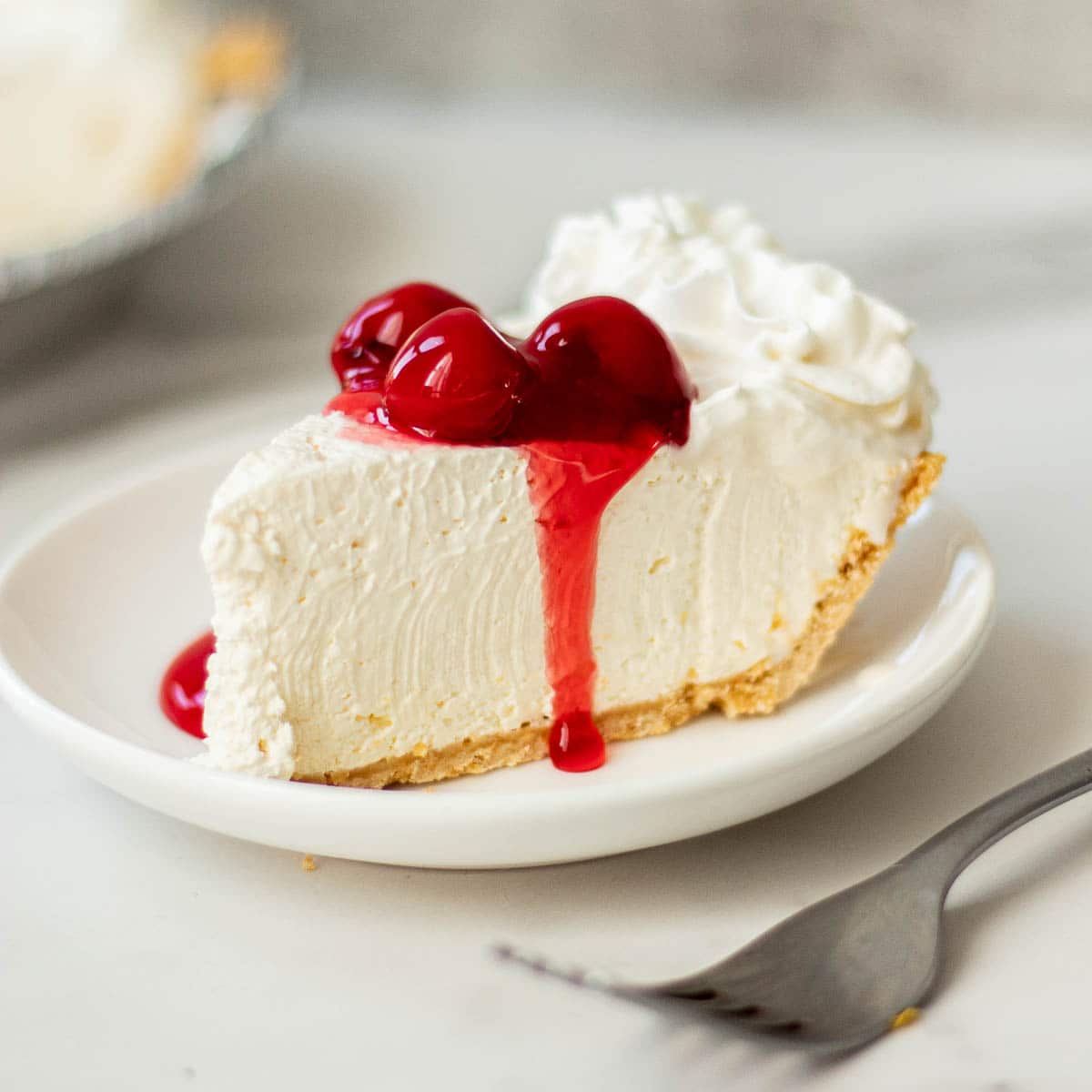
Credit: cheneetoday.com
Frequently Asked Questions
How Long Should I Let Cheesecake Cool Before Refrigerating?
Let the cheesecake cool at room temperature for about 2 hours. Then refrigerate for at least 4 hours.
Can I Cool Cheesecake In The Freezer?
Yes, but only for 30 minutes to 1 hour. It speeds up cooling but watch closely.
Why Is My Cheesecake Cracking While Cooling?
Cracks form from temperature changes. Cool gradually to prevent this. Use a water bath while baking.
Conclusion
Cooling a cheesecake is simple with the right steps. Start by letting it sit at room temperature. This prevents sudden temperature changes. Next, cover it lightly to avoid drying out. Then, transfer it to the fridge for several hours. This helps it firm up nicely.
Use patience to achieve the perfect texture. Slicing and serving becomes easy. Proper cooling enhances flavors. Your cheesecake stays delicious and creamy. Remember, a well-cooled cheesecake is worth the wait. Enjoy every bite of this delightful dessert!
Related Recipes

